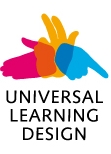The paper summarizes main theoretical foundations, legislative measures, as well as technical and organizational specifics of a visualization of spoken language by a visually accessible synchronous transcription at universities. It further deals with other mechanisms of providing access to spoken language. It analyzes current rules for note-taking at MasarykUniversityand summarizes main positive and negative experiences based on rich practice.
A visualization of spoken language by a visually accessible synchronous transcription has been a well-established service in the world for many years, known as CART (Communication Access Real-time Translation). In the Czech context, this service became more prominent in 2005 when it was used at Masaryk University and the public sector at the same time.
The visualization of spoken language by a written transcription was codified by the Czech legislation in 2008, when Act No. 384/2008 on the communication system for the hard of hearing and deafblind persons came into force, amending Act No. 155/1998 on the communication system for the hard of hearing. MasarykUniversityincluded this service in the Rector's Directive on the Standing of Sign Language and Other Communication Systems for the Hard of Hearing at MasarykUniversity.
Masaryk University offers visualization for access to spoken language when a person with a hearing impairment understands Czech, but a lecturer's speech is incomprehensible because it is too quick, the speaker's articulation is not distinct, the board is frequently used, or the lecture is so scientifically specific that its unambiguous meaning would suffer from a translation into a sign language. All parties of communication may require the service at MasarykUniversitywhenever a communication takes place between persons with hearing impairment and hearing persons, or when audio-materials are offered.
Just as in the case of interpreting into a sign language, the aim of this offered service is to allow a student to participate in the educative process. The way this service is offered and the codes of ethics of visualizators and interpreters into sign language are similar. It is an undisputable advantage of the transcript that it is possible to further edit the created text and use it for future work and study.









